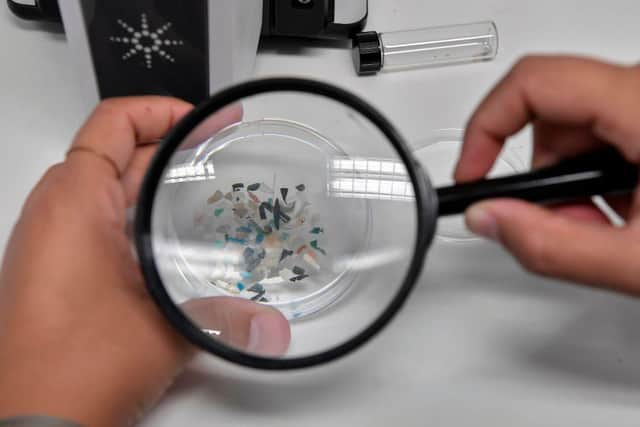Seaspiracy: what is Ali and Lucy Tabrizi’s shocking Netflix fishing industry documentary about?
and live on Freeview channel 276
The documentary, directed by Ali Tabrizi and produced by Kip Andersen (who also produced Cowspiracy) examines the numerous unsustainable practices of the global fishing industry.
What does the documentary cover?
The one hour, 29 minute documentary ranges over many topics, including whaling, microplastics and overfishing.


Advertisement
Hide AdAdvertisement
Hide AdTravelling through Japan, Scandinavia, Africa and France, narrator Ali Tabrizi examines the ways in which humans around the world are draining the ocean of its natural resources.
He looks at some of the supposedly “sustainable” practices used worldwide, exposing them as just the opposite.
In one scene, “sustainably” farmed fish are ushered into floating cages and eaten alive by lice.
In another, the documentary exposes misleading “dolphin-safe” labels on tuna, with up to 45 dolphins dying in the process of fishermen dredging for tuna.
Advertisement
Hide AdAdvertisement
Hide AdTabrizi also speaks to a number of industry leaders, activists and conservationists throughout the film.
One conservation group allows Tabrizi to participate in a night time raise on an illegal fishing vessel.
The group, named Sea Shepherd, are highly controversial and have been declared pirates in a US court ruling.
In several scenes, he’s told to put his camera away or turn it off, providing a telling look at the secrecy of fishing practices.
Advertisement
Hide AdAdvertisement
Hide AdAside from fish, the documentary also covers the human costs associated with fishing operations, including slavery and high mortality rates among fishermen in certain parts of the globe.
Some of the scenes involving the slaughter of fish are fairly graphic, so this may be one to avoid for viewers who would find such scenes distressing.
What are reviews saying?
Currently, the documentary has a rating of 90 per cent out of 83 user-generated reviews on Rotten Tomatoes, though it’s worth noting this score is likely to change as more people watch and rate the film.
The New York Times did not give the film a star rating, but called it: “A Netflix documentary [that] takes viewers on a voyage around the world rooting out the many causes of ocean life decimation, but its rhetorical methods distract from its revelations.”
Advertisement
Hide AdAdvertisement
Hide AdDecider, meanwhile, said of the film: “Tabrizi pieces together a mostly effective — and sometimes thoroughly disturbing — mosaic portrait of an industry left to its own unscrupulous devices.”
In their “stream it or skip it” column, their verdict was that viewers should stream Seaspiracy.
Thrillist said of the film: “If shock and awe are what it takes to get the message across, then Seaspiracy is effective, if not particularly multifaceted.”
When is it out - and how can I watch it?
The documentary is out now, and can be streamed on Netflix UK.
What films is it similar to?
Advertisement
Hide AdAdvertisement
Hide AdThe film follows similar themes to the Oscar-winning documentary The Cove, and popular 2013 film Blackfish on the plight of Orca whales in captivity.
The title shares obvious similarities with Cowspiracy, in which Tabrizi shines a light on the dark and disturbing practices of the global meat industry.